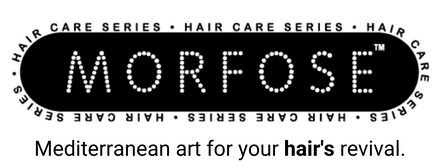Do I Need Beard Oil? Here's What You Need to Know
Posted by MORFOSE COSMETICS

Do I Need Beard Oil? Here's What You Need to Know
Facial hair has been a symbol of masculinity for centuries. However, maintaining a beard or mustache is not as easy as it seems. It needs proper grooming and care to keep it healthy, shiny, and soft. One of the essential grooming products for maintaining a healthy beard is beard oil. If you are wondering whether or not you need beard oil, this article will help you understand everything you need to know.
Understanding the Purpose of Beard Oil
Beard oil has become increasingly popular in recent years, as more and more men have embraced the bearded look. However, many men are still unsure of what beard oil is and how it works. In this article, we will explore the purpose of beard oil and its many benefits.
Beard oil is a blend of carrier and essential oils specifically designed to nourish, moisturize, and condition the facial hair and the skin beneath it. The oil provides a range of benefits that help promote a healthy, fuller-looking, and softer beard.
The Benefits of Beard Oil
One of the most significant benefits of using beard oil is that it helps to keep the skin beneath the beard healthy. The skin under a beard is sensitive and prone to irritation, itching, and dandruff. Beard oil nourishes and moisturizes the skin, reducing the risk of flaking and dryness.
However, the benefits of beard oil don't stop there. Regular use of beard oil can also help to prevent ingrown hairs, which can be painful and unsightly. It can also help to reduce acne and other skin blemishes, leaving your skin looking clear and healthy.
Additionally, beard oil helps to soften the beard, making it more manageable and easier to style. By hydrating and conditioning the hair, the oil reduces the risk of split ends and breakage, allowing the beard to grow longer and thicker. It also gives it a healthy shine, making it look well-groomed.
How Beard Oil Works
The combination of oils in beard oil provides the necessary nutrients and moisture to the hair follicles and the skin beneath it. The carrier oils penetrate the hair shaft, providing hydration, while the essential oils add fragrance and provide additional benefits, such as anti-inflammatory properties. Together, they help to promote beard growth, prevent irritation, and keep the hair soft and healthy.
Some of the most common carrier oils used in beard oil include jojoba oil, argan oil, and coconut oil. These oils are rich in vitamins and minerals that help to nourish and moisturize the skin and hair. Essential oils, such as peppermint, tea tree, and lavender, are often added to provide additional benefits, such as a refreshing scent or anti-inflammatory properties.
In conclusion, beard oil is a must-have for any man looking to grow and maintain a healthy and attractive beard. By nourishing the skin and hair, reducing irritation and flaking, and promoting healthy growth, beard oil can help you achieve the beard of your dreams.
Identifying Your Beard Type and Needs
A beard is not just a facial hair style, it is a lifestyle. Every man who has grown a beard knows that it requires effort, patience, and care. Identifying your beard type and needs is the first step towards a healthy and stylish beard.
Different Beard Textures
There are many different beard textures, and each requires a unique approach to maintenance. Coarse beards, for example, need more nourishment and hydration than fine hair. Similarly, wiry beards require more moisture to keep them manageable and soft.
It's important to understand your beard texture so that you can use the right products and techniques to keep it healthy and looking its best. If you have a coarse beard, you may want to invest in a good beard oil or balm to keep it moisturized and soft. If you have a wiry beard, you may want to use a leave-in conditioner to keep it manageable and prevent tangles.
Beard Growth Stages
Each beard goes through different growth stages, from stubble to a lush, full beard. Maintaining your beard depends on the stage of growth it's in and its unique needs.
During the first few weeks of growth, your beard may look patchy and uneven. This is completely normal, and you should resist the urge to trim or shape it too soon. Instead, focus on keeping it clean and moisturized with a gentle beard wash and conditioning treatment.
As your beard grows longer, you may notice that it becomes more unruly and difficult to manage. This is where a good beard brush or comb comes in handy. Use these tools to detangle your beard and distribute beard oil or balm evenly throughout your facial hair.
Once your beard reaches its desired length, you can start shaping and trimming it to suit your style. Be sure to use sharp scissors or clippers and go slowly to avoid any mistakes. Remember, a well-groomed beard takes time and effort, but the results are worth it.
Choosing the Right Beard Oil for You
Beard oil is an essential grooming product for any man with facial hair. It helps to keep your beard healthy, hydrated, and looking great. However, with so many different types of beard oil on the market, it can be challenging to know which one to choose. In this article, we'll take a closer look at some of the key factors to consider when selecting a beard oil.
Ingredients to Look for
When selecting a beard oil, it's essential to pay attention to the ingredients. Look for a product that contains natural carrier and essential oils. Carrier oils, such as jojoba or argan oil, provide the necessary moisture and hydration to keep your beard healthy and looking great. Essential oils, such as sandalwood or peppermint, provide additional benefits, such as fragrance and anti-inflammatory properties.
Other ingredients to look for in a beard oil include vitamin E, which helps to nourish and protect your skin, and tea tree oil, which has antibacterial properties that can help to prevent acne and other skin irritations.
Scent Preferences
One of the most important factors to consider when selecting a beard oil is the scent. You'll be wearing the oil on your beard all day, so it's essential to choose a scent that you enjoy. Some scents are more masculine, such as sandalwood or cedarwood, while others have a more playful vibe, such as citrus or peppermint.
If you're not sure which scent to choose, consider trying a few different options to see which one you prefer. You can also ask friends or family members for their recommendations.
Price and Quality Considerations
When it comes to beard oil, you get what you pay for. Quality beard oils cost more than the average grooming product, but the higher price tag is justified by the added benefits. A high-quality beard oil will help to promote healthier skin, softer hair, and a more substantial beard.
When selecting a beard oil, it's essential to invest in a high-quality product to ensure you get the best results. Look for a product that contains natural ingredients, is free from harsh chemicals, and is made by a reputable brand.
In conclusion, choosing the right beard oil is essential for maintaining healthy facial hair. When selecting a beard oil, pay attention to the ingredients, scent, and price to ensure you get the best product for your needs.
How to Apply Beard Oil Properly
Preparing Your Beard
Before you apply beard oil, it is essential to prepare your beard properly. Start by washing your beard with a gentle shampoo to remove any dirt or debris that may have accumulated. Rinse thoroughly with warm water and pat dry with a towel. Make sure your beard is completely dry before applying beard oil, as water can prevent the oil from penetrating the hair shaft and hydrating the follicles effectively.
Next, use a beard comb or brush to detangle your beard. This step is crucial, as it helps to ensure that the oil can reach every hair and the skin beneath it. Comb or brush your beard gently, starting at the bottom and working your way up to the top.
Application Techniques
Now that your beard is clean and detangled, it's time to apply the beard oil. Start by putting a few drops of oil in your palm and rubbing your hands together to distribute the oil evenly. Next, apply the oil to your beard, making sure you cover all the hair and the skin beneath it. Use your fingers or a comb to spread the oil evenly throughout the beard, working from the roots to the tips.
When applying beard oil, it's essential to be gentle and avoid tugging or pulling on the hair. Take your time and work the oil in thoroughly, making sure that every hair is coated. If you have a particularly long or thick beard, you may need to use more oil to ensure that it is adequately covered.
Once you have applied the oil, use a towel to remove any excess. Be sure to blot gently rather than rubbing, as this can cause damage to the hair and skin.
How Often to Use Beard Oil
How often you use beard oil depends on several factors, including the length and texture of your beard, the climate you live in, and your personal preferences. As a general rule, it's best to apply beard oil once a day for shorter beards and twice a day for longer or thicker beards.
However, it's essential to follow the manufacturer's guidelines, as each product has slightly different instructions. Some oils may be more potent than others, and using too much can lead to greasy or oily hair. On the other hand, using too little may not provide the desired level of hydration and nourishment.
Experiment with different amounts and frequencies until you find the right balance for your beard. Remember, a well-maintained beard is a healthy beard, so take the time to care for it properly.
Alternatives to Beard Oil
Beard Balms and Waxes
Beard balms and waxes are similar to beard oil but provide a little hold. They are better suited for longer, thicker beards that require more styling. Balms are usually made with shea butter, beeswax, and essential oils and work by softening the beard and providing hold. Wax, on the other hand, is less common but provides stronger hold and can be used to shape a beard into more elaborate styles.
Natural Oils and DIY Solutions
If you prefer to go the natural route, there are many oils available that are safe for use on beards, such as castor oil or coconut oil. You can also create DIY beard oil by combining carrier oils, such as jojoba or grapeseed oil, with essential oils of your choice.
Conclusion
Beard oil is an essential grooming product for anyone serious about maintaining a healthy, soft, and shiny beard. While it's not necessary for everyone, it provides many benefits that promote a fuller, more manageable beard. Choose the right product based on your beard type and needs and follow the application instructions carefully to ensure optimal results. Whether you use beard oil, balm, or wax, the most important thing is to maintain your beard with care and pride, as it's a reflection of your unique sense of style and masculinity.



